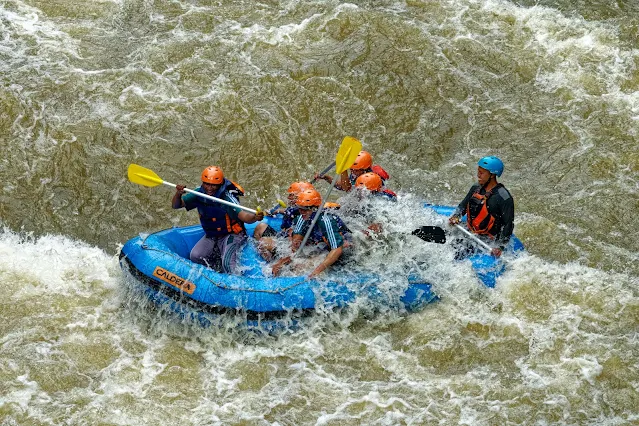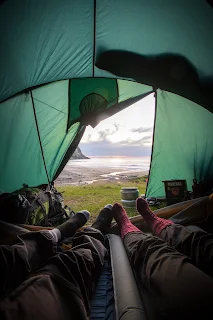Rishikesh in India's northern state of Uttarakhand is a popular destination for adventure sports and activities, especially river rafting. The Ganges River flows through the city, making it an ideal place for rafting enthusiasts. However, there are a few things you need to know before embarking on a rafting trip in Rishikesh.
Preparation
Ensure you are physically fit and healthy. Rafting involves physical exertion and exposure to the elements, so make sure you are up for the challenge. Consult your doctor if needed.
Get the required vaccinations. Check which vaccinations are recommended for the area and get them well in advance.
Carry the essential documents like your passport, ID proof, travel insurance, and medical prescriptions if needed. Make photocopies and leave copies with someone at home.
Equipment
- Wear comfortable sports shoes that can get wet. Sandals and flip flops are not recommended.
- Wear quick dry clothing like nylon or polyester. Carry extra clothes in a waterproof bag.
- Carry a waterproof sun hat or cap and high SPF sunscreen.
- Wear sunglasses to protect your eyes from the sun and spray.
- Carry a dry bag or waterproof pouch to keep your valuables and documents safe.
Safety
- Rafting companies will provide you with a life jacket and helmet. Ensure they fit you properly and are in good condition.
- Follow all safety instructions from your guide carefully. They are there for your safety.
- Stay within the raft at all times. Do not stand up or get out while rafting.
- Avoid getting your hands or limbs outside the raft.
- Be prepared to get wet! Rafting involves getting splashed by water and even falling into the river at times.
Weather and Water
Check the weather forecast before your trip. Rainy or stormy weather can make rafting dangerous.
The water level and speed of the river varies with the season. Monsoon season from June to September has the highest water levels.
Difficulty Levels
Rafting trips in Rishikesh are graded based on difficulty:
• Grade 1 (Beginner): Slow moving water with minimal rapids. Suitable for families.
• Grade 2 (Intermediate): Small to medium rapids with some rock obstacles.
• Grade 3 (Advanced): Medium to large rapids with obstacles and possible exposure to rough water.
• Grade 4 (Expert): Large rapids with complex maneuvers needed. For experienced rafters.
Choose a difficulty level based on your fitness, experience and comfort level. You can always upgrade to a higher level later.
I hope this helps give you an overview of what you need to know before going rafting in Rishikesh! Let me know if you have any other questions.


Comments
Post a Comment